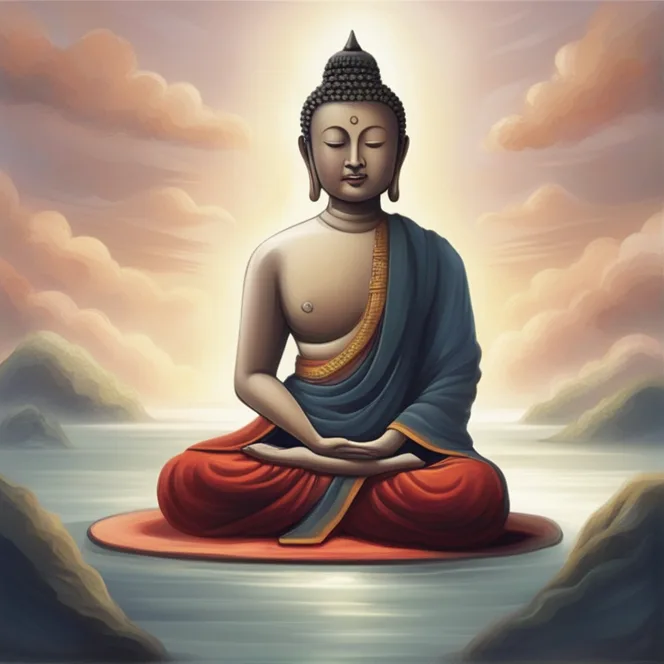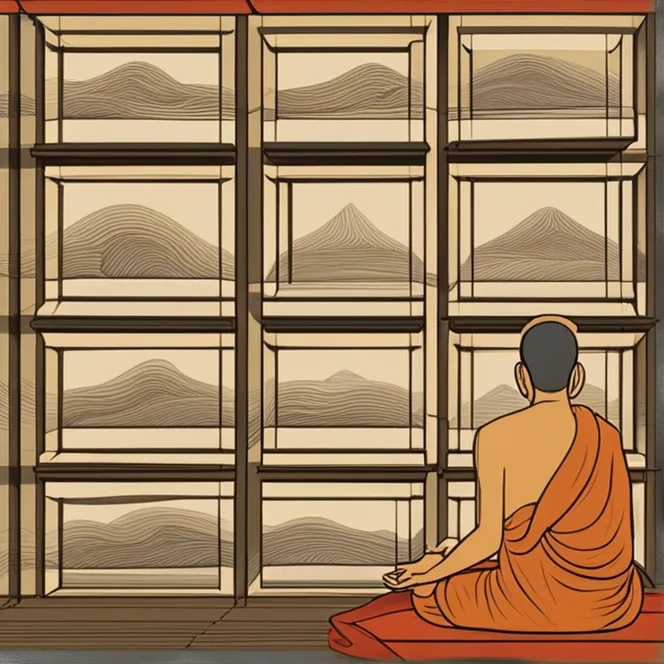
Meditation In Buddhism
Explore the fundamental role and practice of meditation in Buddhist traditions, and how it leads to spiritual awakening and enlightenment.
article by Hina Kurosawa
The Core of Buddhist Practice
Meditation is often considered the heart of Buddhist practice, an essential tool on the path towards enlightenment and liberation. The Buddha himself, after years of rigorous ascetic practices, found enlightenment while meditating under the Bodhi tree. He later taught meditation as a means of cultivating the mind, overcoming suffering, and realizing the true nature of reality. In Buddhism, the art of meditation is more than relaxation—it is a profound spiritual practice aimed at achieving insight and transcending the cycle of rebirth.

Varieties of Meditation Techniques
Within the vast canopy of Buddhism, there exists a multitude of meditation techniques, each tailored to the needs and capacities of practitioners. From the mindfulness of breathing (ānāpānasati) to the visualization of deities or the profound methods of 'Vipassana' (insight meditation) and 'Samatha' (calming meditation), Buddhist meditation is rich and diverse. Different traditions emphasize various methods, but all hold the common objective of fostering concentration, mindfulness, and ultimately, wisdom.
Mindfulness and Awareness
Mindfulness (sati) is a cornerstone of Buddhist meditation practice. It involves paying non-judgmental and focused attention to the present moment, observing thoughts, sensations, and emotions as they arise and pass away. This cultivation of awareness leads to a clearer understanding of the impermanent and interconnected nature of all things. As mindfulness deepens, practitioners can develop insight into the causes of suffering and how to untangle themselves from it, moving closer to the Buddhist goal of nirvana.

The Stages of Meditation
Traditionally, progression in meditation is seen as moving through stages. Initially, the focus is on achieving concentration, known as 'samadhi,' by calming the mind and reducing distractions. With a stable and concentrated mind, insight or 'vipassana' can flourish. Insight practices involve contemplating the three marks of existence: impermanence (anicca), suffering (dukkha), and non-self (anatta). Through direct observation of these realities, one's attachment to the self and to temporary phenomena diminishes, paving the way for enlightenment.

The Benefits Beyond Enlightenment
Although the ultimate aim of meditation in Buddhism is spiritual awakening, the benefits are not solely reserved for the distant goal of enlightenment. Regular meditation practice can enhance one's well-being, reduce stress, increase mental clarity, and improve emotional regulation. By integrating meditation into daily life, practitioners can lead more compassionate, mindful, and balanced lives, fostering a sense of harmony within themselves and with the world around them.
Integrating Meditation with Daily Life
The true test of meditation comes not on the cushion but in everyday life. Buddhist teaching encourages practitioners to extend the calm, focused awareness developed in meditation to all activities. This practice, known as 'Samu' or 'work meditation,' allows one to maintain a meditative mindset while engaging in daily tasks. In doing so, every action becomes an opportunity for practice—a moment to embody the teachings of the Buddha and continue the process of awakening.
In Buddhism, meditation is not an isolated activity but a gateway to transformation. It is a method for developing the mind's inherent capabilities of mindfulness, concentration, and insight. By dedicating oneself to the practice, a practitioner walks the path tread by the Buddha, aspiring to the same freedom from suffering and the same profound understanding that mark the awakened mind. Meditation in Buddhism, therefore, is a profound journey from delusion to reality, from bondage to liberation.
Published: 12/13/2023
Modified: 12/13/2023
More predictions
Come back here soon to learn more about yourself and your future


Mastering Calm: Meditation For Anxiety
Explore the serenity of mindfulness through meditation techniques designed to soothe anxiety and restore inner peace.


Meditation: Diverse Practices For Mindfulness
Delve into the various meditation types that foster mindfulness, serenity, and internal harmony, catering to different preferences and lifestyles.


Exploring The Heart Of Mediterranean Cuisine
Explore the health benefits and key components of the Mediterranean Diet, a blueprint for balanced eating and well-being.